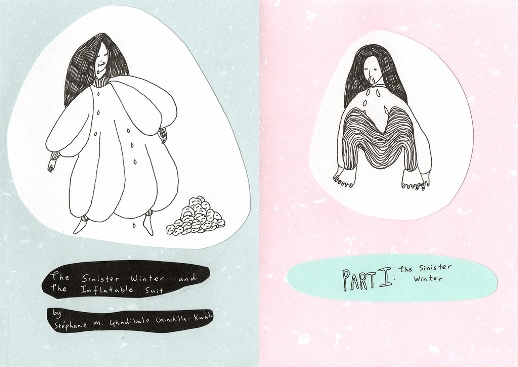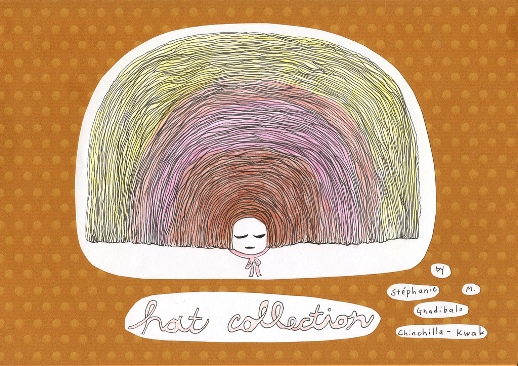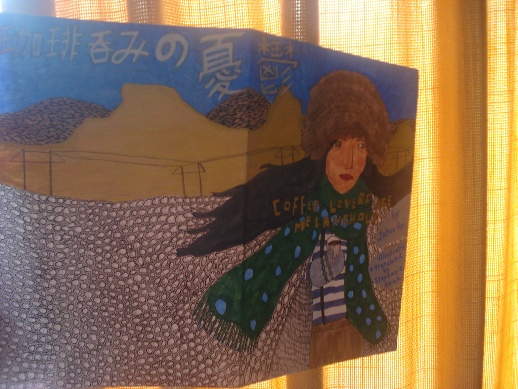Zines and Wasabi
Following our other profiles and interviews with Keisuke Narita and Adam Pasion, in this article TABlog interviews two other foreign zinesters with experience of the Japanese scene.
Andrea Hope is one brave American expat who a few years ago started Wasabi Distro in order to showcase (mostly, but not only) English zines made in Japan, and sell foreign stuff to the zine-starved expat community for cheap prices.

What was your first experience with zines?
Andrea: My experience with zines came through indie comics, comic zines and punk music. When I first came to Japan, I became friends with an American woman, Mia Ellis, living here, who did the zine Pearshaped. I wrote articles for the two issues she produced while in Japan (she had done earlier issues while living in Scotland). She got me into perzines [personal zines], and introduced me to the awesome perzine/noise music zine Exile Osaka, done by Matt Exile, who lives in Kansai.
Why did you start Wasabi Distro?
Andrea: I mainly started Wasabi Distro because I couldn’t find the zines I liked here. I used to buy English zines at the Shibuya Tower Records, but when they went bankrupt, they changed distributors and stopped carrying them. So I started mail ordering them from the US and Europe, and realized that for only a little more money, I could order some extra copies and distro them here, so that’s when I started.
What do you think of Japanese zinesters and the zine scene here?
Andrea: The zinesters I’ve met in Japan have been super friendly. My impression of the Japanese zine scene is limited, but it seems that the vast majority are self-published comics and comic zines, then art (usually photography) zines next, with the minority being music and political zines. I rarely see traditional perzines that are common in the US and Europe. I think that there is some dispute in the US zine community about where the lines are between “comic books” and comic zines/art zines, but in Japan I think they are drawn pretty clearly between manga and minikomi [mini comics].

What do you think about the quality here?
Andrea: One thing I am continually impressed with is the level of professionalism of self-published zines and comics. They are often professionally printed, with colored covers. On the other side, many art zines are pretty expensive. Most of them, though very well done, have prices ranging between 800 and 1000 yen [$8-10] for 20 photocopied pages.
Your distro business seems to have been on hiatus for a while.
Andrea: I am finally getting my distro back online, just working out the online shopping cart, and have even just put out my first mini zine.

Stephanie M. Ghadibalo Chinchilla-Kwak, is another American zinester who has found the Japanese scene a little difficult to crack.

Stephanie: I feel like the local scene is very, very small and borrows heavily from the American and European influences. It’s difficult for me to pinpoint what makes the local scene’s style particularly “Japanese” besides the use of the Japanese language and the focus on Japan as a subject. Of course, there’s a lot of intermingling – there are a lot of Europeans who make DIY zines, and there are a lot of Americans who make artists’ book-like zines.
Have you met many zinesters here?
Stephanie: I went to the Tokyo Book Fair, and a lot of the zines were about ‘90s-era riot grrl bands from the Pacific Northwest, anarchism, feminism, vegetarianism, and politics. A lot of them were heavily textual. Most of the attendants were Japanese, with a few Americans and Europeans thrown in. I felt a little like an outsider but I guess it’s because everyone seemed to already know each other. Overall it seems to be a small but tight-knit community.
Andrea and Stephanie, thanks so much for talking with us.
You can check out Sephanie’s work on her website and Andrea’s online distro here.
Randy Swank
Randy Swank



